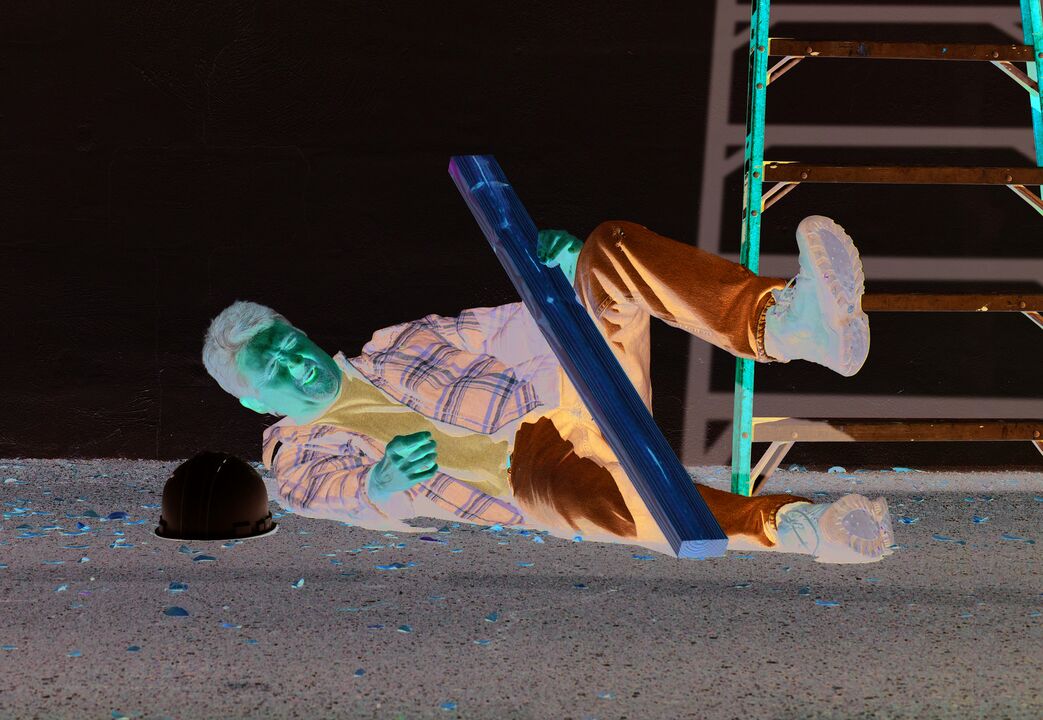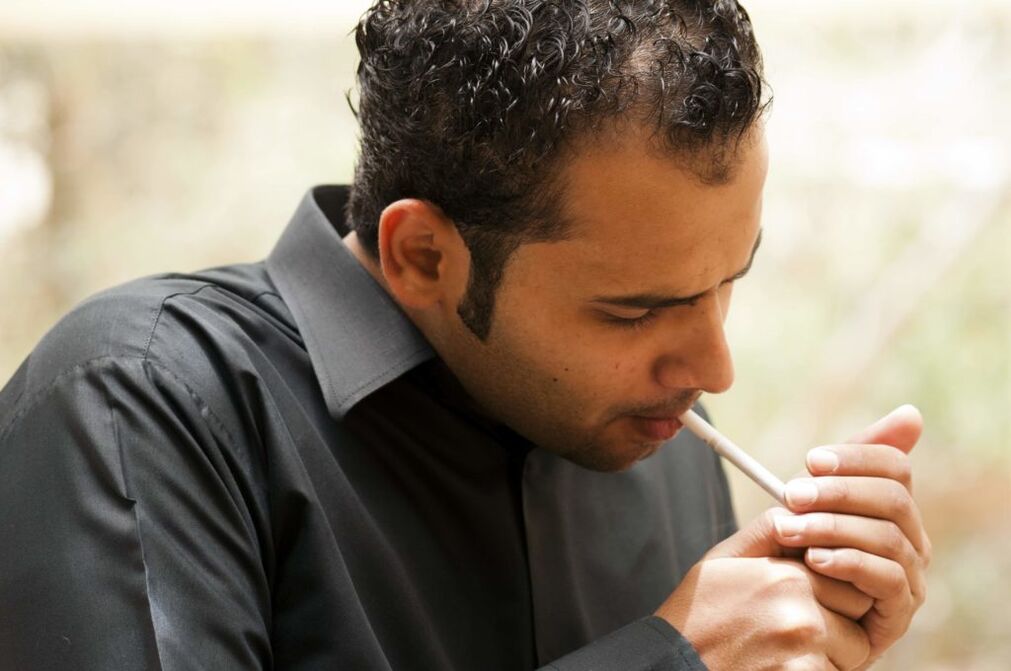There are several forms of prostatitis, which differ in the symptoms and course of the inflammatory process. Despite the fact that, in general, this disease has been studied quite thoroughly, there is a form that is still little known - this is bacterial prostatitis. This condition is also known as chronic pelvic pain syndrome and according to the latest information, it occurs in one in five men on the planet. Despite such widespread occurrence, the disease remains a mystery to doctors and is difficult to treat.
What is the difference between bacterial and non-infectious prostatitis?
Bacterial or nonbacterial prostatitis is often confused with noninfectious prostatitis. In fact, these are two different diseases with different manifestations and causes of development.
Chronic prostatitis is a disease with no obvious symptoms of inflammation in the prostate gland. Moreover, in the majority of cases, a detailed examination does not allow to determine the presence of an inflammatory process in the organ. At the same time, non-communicable prostatitis is an inflammatory disease with a well-defined and well-studied etiology. Non-infectious prostatitis is caused by a violation of the properties of the prostate gland, as a result of which the secretion of the prostate gland stagnates and the inflammatory process develops. Noninfectious prostatitis is usually diagnosed in older patients, while nonbacterial prostatitis can occur in men of any age.
To avoid confusion, nonbacterial prostatitis, also known as chronic pelvic pain syndrome, completely describes the main symptoms of this complex disease.
Typical symptoms

With little need, unpleasant painful sensations are felt.
The signs of bacterial prostatitis are not the same as those of prostatitis, so many doctors attribute the neurological nature of the development of this disease.
With bacterial prostatitis, the symptoms are as follows:
- constant pain in the pelvic area;
- syndrome of increased pain when urinating;
- severe discomfort with ejaculation;
- general physical illness;
- nervous tension.
As a rule, pelvic pain occurs for a long time, in the period from three months to six months. Pain syndrome, monotonous, can go away without the use of pain medication, then will return spontaneously. The pain radiates down the testicles, perineum, and anus. Sometimes there are brief bursts of "nerve" pain in the lower back, abdomen, groin.
The patient complains of a worsening erection. During ejaculation, he has a feeling of intense tension, when ejaculating is accompanied by sharp pain. When urinating, severe pain may also occur.
Concomitant with these symptoms is a strong emotional breakdown. The man is stressed, prone to stress, some patients suffer from insomnia and nervous disorder-like states.
Causes of bacterial prostatitis

A fall and trauma to the back can cause illness.
Nonbacterial prostatitis is still not well understood, so doctors have come up with possible causes for it.
The exact mechanism of development and pathogenesis of chronic bacterial prostatitis has not been established.
Presumably, the disease can develop for the following reasons:
- inflammation of the ligaments and tendons of the pelvic floor;
- autoimmune process;
- an increase in the ligaments of the pelvic floor;
- back injuries and chronic diseases of the spine;
- violation of the blood circulation in the prostate gland;
- neuropsychiatric reasons;
- Intracellular parasites and pathogens in the prostate gland.
Inflammation of the ligaments and tendons of the pelvic floor can develop due to infectious diseases of the organs of the genitourinary system, located in the vicinity. As a result, the infection spreads to the ligaments, which become inflamed and enlarged, compressing and irritating nearby nerve endings. The pain that a man feels at the same time can radiate along the nerves, causing the lower back, groin, lower abdomen, or anus.
Another suspected cause of chronic bacterial prostatitis or CABD is an autoimmune process in the body. As a result of such a failure, the immune system begins to perceive the cells of the prostate as a foreign element and attack them with immune cells, leading to the appearance of the classic symptoms. pattern of bacterial prostatitis.
Another suspected cause is viral prostatitis, which the patient acquired as a child. Because the prostate gland in boys is not fully developed, the viral inflammation of this organ can have no obvious symptoms and turn into a chronic form, which in adult men manifests as a syndrome. pelvic pain.
This disease can also be associated with various back pathologies, trauma or bone necrosis, whereby spinal nerve roots compression occurs, causing pain and prostate disruption.
Some doctors think that the disease may be caused by a congenital insufficiency of the prostate gland, so that the organ cannot perform its function. Over time, this leads to the onset of the chronic pain characteristic of bacterial prostatitis.
In addition, it has been hypothesized that CABD may be caused by neuropsychiatric disorders, for example, severe stress, neurosis, and vascular dystonia. In this case, the pathology must be considered a mental illness.
Another theory is that the disease may be related to parasites or intracellular microorganisms, whose sizes are too small to allow detection of the pathogen by standard methods.
Risk factors

Smoking can contribute to prostate problems.
Presumably, the risk factors for developing chronic pelvic pain syndrome in men are:
- previous diseases of the prostate gland;
- chronic stress;
- back-ache;
- hypothermia of the pelvic organs;
- urogenital infections;
- chronic testicular disease;
- bad habits;
- circulatory disorders of the pelvic organs;
- lower motivation;
- pelvic trauma.
The risk of developing the disease increases if a man does not eat and drink properly. Deficiencies in vitamins and essential trace elements can affect not only general health, but also prostate function.
Differential diagnosis
To diagnose chronic pelvic pain syndrome, the following conditions are required:
- long-term pain, for a period of three months;
- the absence of pathogenic microorganisms in the exudate prostate;
- no foci of chronic infection in the body;
- discomfort during ejaculation.
For diagnosis, differential diagnosis with prostate cancer, neurological syndromes, pathologies of the spine, leading to irritation of the roots of the spinal nerves.
A general urological examination is required - palpation of the prostate gland, transrectal ultrasound of the organ, study of the composition of prostatic secretions. You should also rule out inflammatory diseases of the testicles, bladder, and kidney disease, which can manifest as pain syndromes with different etiologies.
Must be seen by a neurologist and therapist. You should also consult an obstetrician to rule out anorectal disease.
Treatments
An integrated approach used in the treatment of bacterial prostatitis. Therapy is selected by the urologist, taking into account the features of the disease process in the patient. This takes into account the general health and psycho-emotional state of the man.
Treatment includes the following methods:
- symptomatic treatment;
- prostate massage;
- physical therapy methods.
When needed, treatment can be supplemented with sedatives, homeopathic and herbal remedies.
Drug treatment

Before using drug therapy, you need to consult your doctor.
For the symptomatic treatment of bacterial prostatitis, drugs of the following groups are prescribed:
- antibiotic of a wide range of antibacterial action;
- non-steroidal anti-inflammatory drugs;
- antispasmodics and analgesics;
- alpha blockers;
- tranquilizers and antidepressants.
In the treatment of nonbacterial prostatitis, antibacterial agents are used, however paradoxical it may sound. The fact that the theory of microorganisms cannot be seen through a microscope is still open, therefore antibacterial agents are prescribed for prevention. Urologists say that these drugs help to quickly eliminate the symptoms of the disease, so their use is completely grounded.
Antispasmodics and analgesics are used to relieve pain. Nonsteroidal anti-inflammatory drugs may also be used as symptomatic therapy.
To facilitate the process of urination, the use of alpha-blockers is indicated.
It should be noted that the optimal treatment regimen is selected individually for each man. You should not self-medicate, mindlessly take the drugs of the listed group, you'd better trust an experienced specialist.
Prostate massage and physiotherapy
In general, the treatment of prostatitis with drugs gives good results. Other methods are needed to consolidate the therapeutic effect.
Prostate massage improves organ function, prevents stagnation of prostate secretions, normalizes blood circulation and metabolism. He is appointed in a course of 10 procedures.
As physiotherapy, magnetic manipulation, ultrasound therapy, electrophoresis with vasodilators and others are prescribed. In addition, patients are shown spa treatments, such as mud therapy.
Folk methods of treatment

Motherwort herbal tincture is very good for the treatment of disease.
Non-bacterial prostatitis can only be treated with folk remedies after consulting a doctor, otherwise such treatment will not help but only aggravate the health condition.
To treat non-bacterial prostatitis with folk remedies, you can use:
- decoctions of sedative herbs to improve overall well-being - chamomile, perilla, wormwood, valerian;
- microclyster with anti-inflammatory decoction of St. John's wort, calamus, yarrow;
- soak in a warm bath with a decoction of nettle, fresh water or nettle;
- suppositories with pumpkin seed oil;
- sanitary napkins with honey and propolis.
Use of any of the funds listed must be approved by a physician. Suppositories are prepared as follows: five parts cocoa butter is melted in a water bath, then one part honey and one part propolis (or two parts pumpkin seed oil) are added. After that, the mass was cooled, suppositories 4 cm long and 1 cm in diameter were formed and cooled in a refrigerator. Such suppositories should be injected into the rectum after douching at night for two weeks.
Possible complications and how to prevent them
Bacterial prostatitis requires prompt diagnosis and treatment. Otherwise, pelvic pain syndrome can lead to infertility, impotence, vasculitis and other problems of the male reproductive system.
To prevent the development of the disease, it is necessary to lead an active lifestyle and eat right. It is important to maintain immunity, to prevent hypothermia of the pelvic organs. Men need to have a regular sex life with a constant partner to prevent the development of stagnant processes in the prostate. It is also important to have regular preventive visits with a urologist.
























